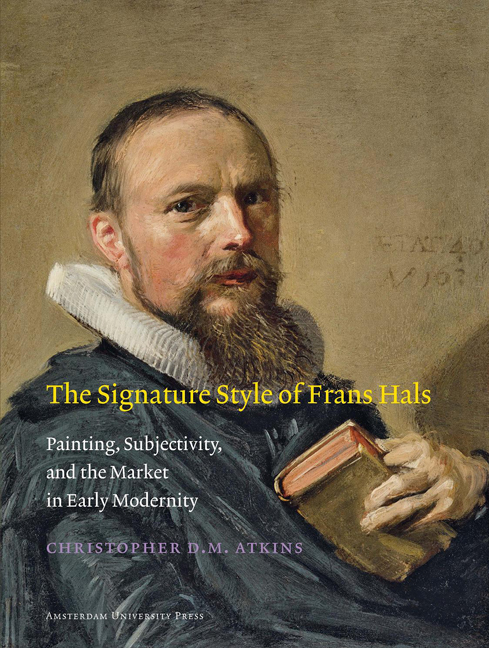Chapter 2 - Virtuosity
Published online by Cambridge University Press: 14 January 2021
Summary
Frans Hals's late Portrait of a Man in the Museé Jacquemart-André (fig. 61) displays the artist's bold mastery of his materials. Half-cloaked in shadow, the man's broad features and ruddy complexion demand the viewer's attention. Upon closer inspection, one notices that Hals conveyed the play of light across the sitter's face through a series of unblended daubs of unmodulated color. For the sitter's left cheek, for example, he applied a pinkish flesh tone atop a red ground without smoothing out the perimeter of the bristles’ reach and crowned the crest of the cheekbone with a dab of pure white. Elsewhere, Hals ran a single arc of umber upward from the tail of the mustache to the edge of the nostril carving a furrowed shadow to create volume and distinguish the features of the face. He crafted the nose and forehead from similar juxtaposed swaths of unblended tones. Hals's method of limited, highly visible touches is even more readily apparent in his attention to the man's garment. The broad gray sleeve would lie flat if not for a series of efficient strokes. A thick black sweep defines the elbow crease. Shorter strokes radiate up and down the sleeve to create folds. On the underside of each black jab is a smaller hint of a light gray or pure white that casts a highlight in contrast to its shadow, giving a sense of depth. Most remarkable is the nearly white gray daub beneath the central crease. The stroke has uneven tails and undulates in thickness, features that convey a sense of hasty application. Yet it is perfectly placed, for it grazes the black without smudging either tone. The black and gray lie side by side in perfect harmony. In passages like these where Hals's skills as a painter are abundantly clear, the unblended brushwork beckons the viewer to contemplate the act of creation. How was Hals able to place his bare strokes just so, without mistake?
While contemporary appreciation for Hals's painterly approach has surely been conditioned by the prevalence of gestural painting in modernity from Impressionism to Abstract Expressionism and the general favor in which these movements are held, does that mean that responses like the one above are inherently anachronistic?
- Type
- Chapter
- Information
- Signature Style of Frans HalsPainting, Subjectivity, and the Market in Early Modernity, pp. 87 - 114Publisher: Amsterdam University PressPrint publication year: 2012

